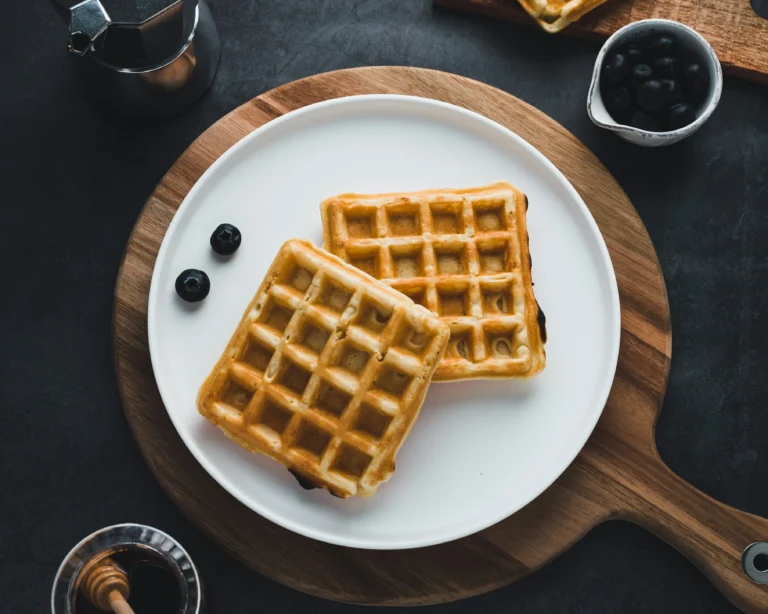The Ultimate Food Safety Infographic
Master food safety with this interactive guide to temperatures, storage, and common myths.
The Danger Zone
The “Danger Zone” is the temperature range where harmful bacteria multiply most rapidly. Use the slider below to see where different temperatures fall on the scale.
Current Temperature:
70°FTemperature Converter
Quickly convert between Fahrenheit and Celsius. Type a value in either box and the other will update automatically.
Minimum Cooking Temperatures
Cook foods to these minimum internal temperatures to kill harmful bacteria. Use the search bar to find a specific food.
| Food Item | Temperature (°F) | Temperature (°C) |
|---|---|---|
| Poultry (whole, ground, parts) | 165°F | 74°C |
| Ground Meat (beef, pork, veal, lamb) | 160°F | 71°C |
| Beef, Veal, Lamb (steaks, roasts, chops) | 145°F (with 3-minute rest) | 63°C (with 3-minute rest) |
| Pork (steaks, roasts, chops) | 145°F (with 3-minute rest) | 63°C (with 3-minute rest) |
| Fish and Shellfish | 145°F | 63°C |
| Eggs (cooked until yolk and white are firm) | 160°F | 71°C |
| Leftovers and Casseroles | 165°F | 74°C |
Myth Buster
Click on each card to see if it’s a food safety myth or fact!
Myth or Fact?
You can tell if food is safe to eat by smelling or tasting it.
(Click to reveal)MYTH
Harmful bacteria do not always change the look, smell, or taste of food. The only way to know for sure is to use a food thermometer.
Myth or Fact?
Washing raw chicken before cooking removes bacteria.
(Click to reveal)MYTH
Washing raw poultry can spread bacteria from the chicken to other surfaces in your kitchen. Cooking to the correct temperature is what kills bacteria.
Myth or Fact?
It’s safe to thaw frozen meat on the kitchen counter.
(Click to reveal)MYTH
The outside of the food will enter the Danger Zone before the inside thaws. Always thaw in the refrigerator, microwave, or in cold water.
Food Storage Guidelines
Properly storing food is crucial to prevent bacterial growth. Follow these guidelines for different types of food storage.
Refrigerator ($40^{\circ}F$ or below)
- Leftovers: 3-4 days
- Raw Poultry/Ground Meat: 1-2 days
- Raw Roasts/Steaks/Chops: 3-5 days
- Lunch Meat (deli): 3-5 days after opening
Freezer ($0^{\circ}F$ or below)
- Leftovers: 2-6 months
- Raw Poultry/Ground Meat: 3-4 months
- Raw Roasts/Steaks/Chops: 4-12 months
- Bread: 2-3 months
Pantry (Cool, dry place)
- Canned Goods: 1-2 years
- Dry Pasta/Rice: 1-2 years
- Flour: 6-12 months
- Spices: 1-2 years
Rapid Cooling Tips
Get hot foods out of the Danger Zone as quickly as possible. Here are a few tips to speed up the cooling process:
- Ice Bath: For soups, stews, or sauces, place the pot in a large bowl of ice water and stir frequently.
- Divide Food: Split large batches of food into smaller, shallow containers. This increases the surface area and allows for faster cooling.
- Shallow Containers: Use containers that are no more than 2 inches deep for hot foods before refrigerating.
- Wait to Cover: Do not put a lid on the container until the food has fully cooled.
The Interactive Guide to Food Safety
Mastering temperature control is the single most important step to prevent foodborne illness. This guide makes it simple.
Temperature Converter
Use this quick tool to convert temperatures between different units, including Celsius and Fahrenheit.
The Temperature “Danger Zone”
Bacteria multiply fastest between 40°F and 140°F. Your goal is to keep food out of this range. Perishable food left in the Danger Zone for over 2 hours (or 1 hour if above 90°F) should be discarded.
Safe Cooking Temperature Chart
Use a food thermometer to ensure foods are cooked to a safe minimum internal temperature. This is the only reliable way to kill harmful bacteria.
| Food Product | Minimum Temperature | Rest Time |
|---|
The Full Food Safety Cycle
Safety doesn’t end with cooking. Proper thawing, cooling, and reheating are just as critical to prevent bacterial growth.
✅ Safe Methods
- In the Refrigerator: Slowest but safest method.
- In Cold Water: In a leak-proof bag, change water every 30 mins.
- In the Microwave: Must cook immediately after thawing.
❌ Unsafe Method
Never thaw on the counter. The outer layers of the food can enter the Danger Zone, allowing bacteria to multiply rapidly, even while the center is still frozen.
The Two-Stage Cooling Process
Improperly cooled food is a leading cause of foodborne illness. You must cool food rapidly through the Danger Zone.
Stage 1
Cool from 135°F to 70°F
within 2 hours
Stage 2
Cool from 70°F to 41°F
within 4 hours
(Total cooling time must not exceed 6 hours)
Tips for Faster Cooling:
- Divide large amounts into small, shallow containers.
- Use an ice bath or ice wands for soups and stews.
- Stir food frequently to release heat.
Reheating Leftovers
All leftovers must be reheated to an internal temperature of:
165°F
Reheat food rapidly. Avoid slow cookers or warming trays, as these can keep food in the Danger Zone for too long.
Food Safety Myths: Busted
Don’t let common misconceptions put you at risk. Click on a myth to reveal the fact.
Choosing Your Tool
A food thermometer is your best defense. Different types have different uses, but all are better than guessing.
Digital Instant-Read
Fast and accurate for thick or thin foods.
Dial Instant-Read
Slower, but effective. Not for thin foods.
Oven-going
Stays in the food while it cooks. Great for roasts.
Thermometer Fork
Convenient for grilling, but check in multiple spots.
 Skip to content
Skip to content

